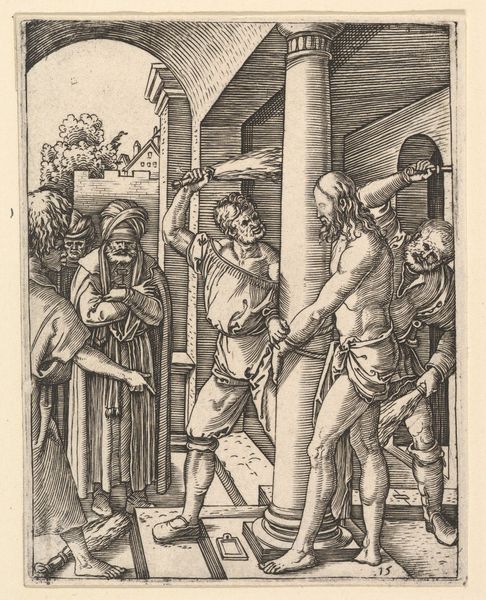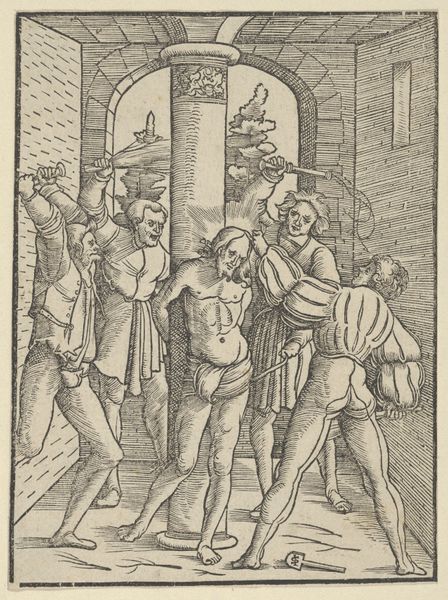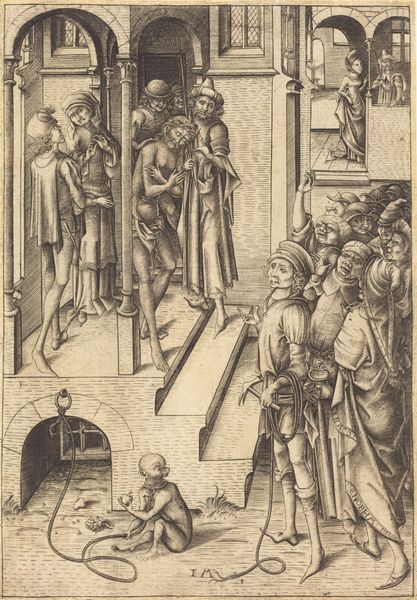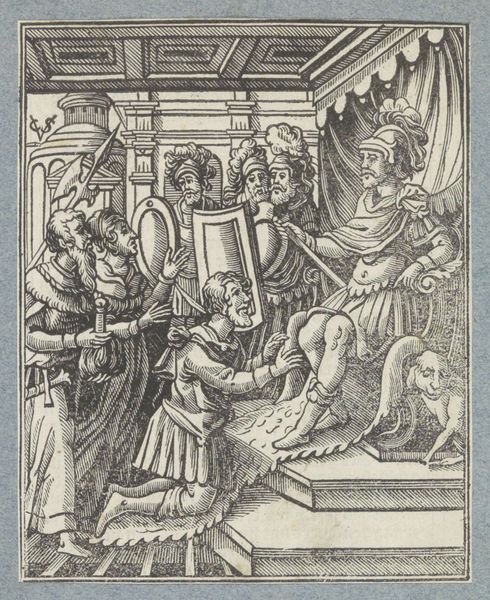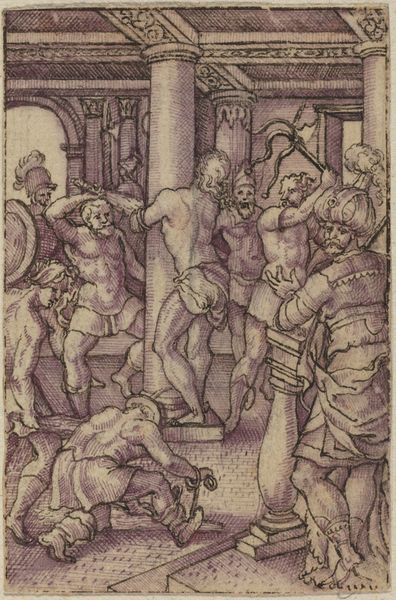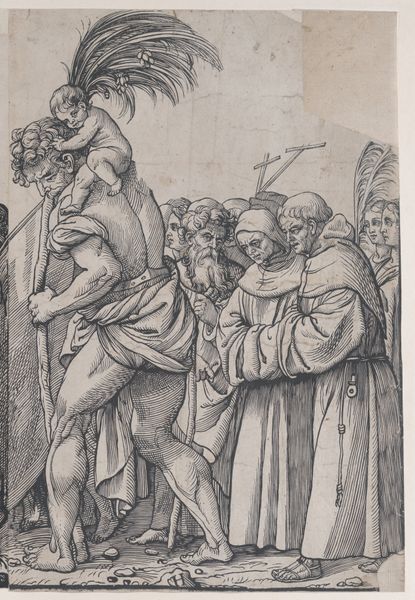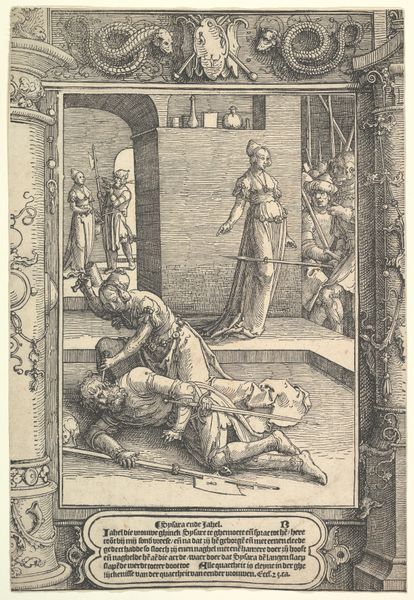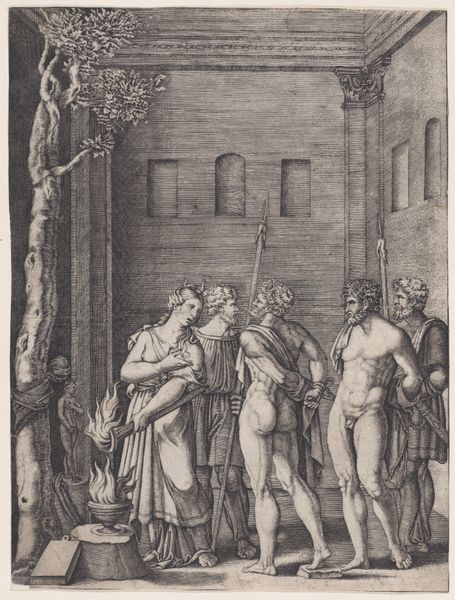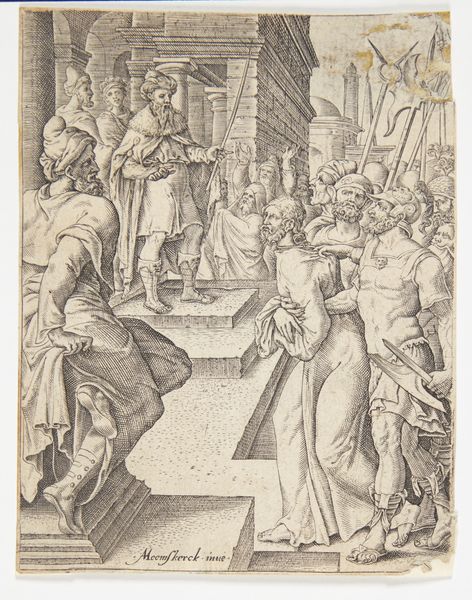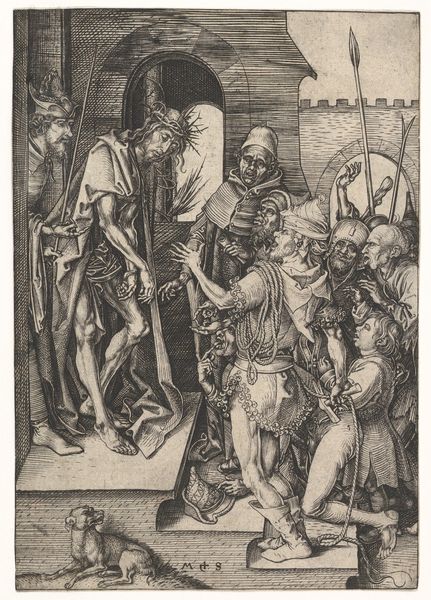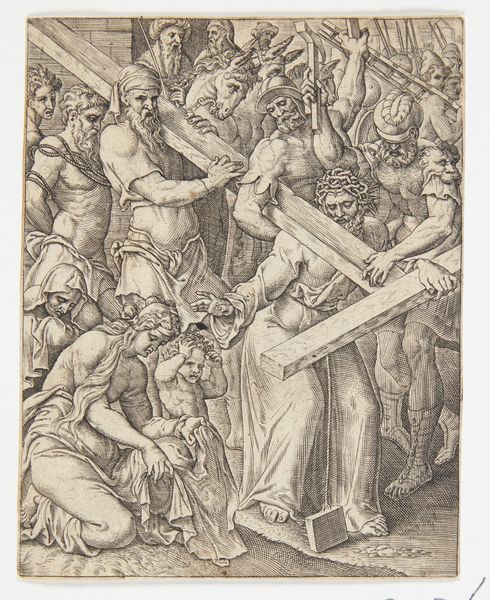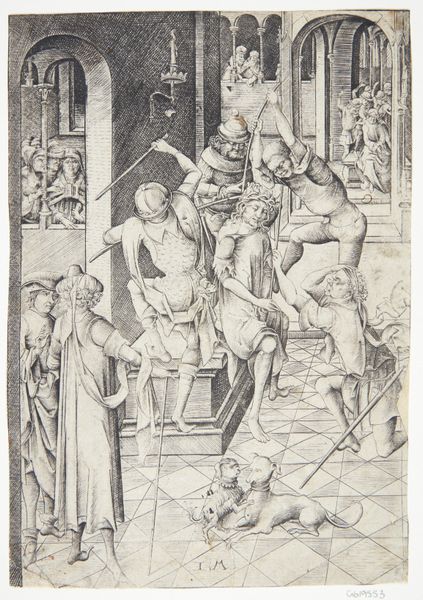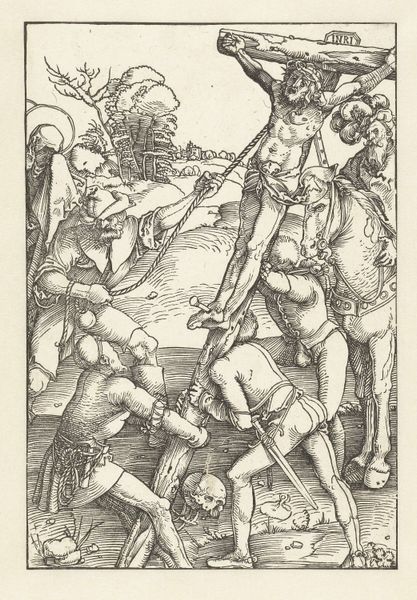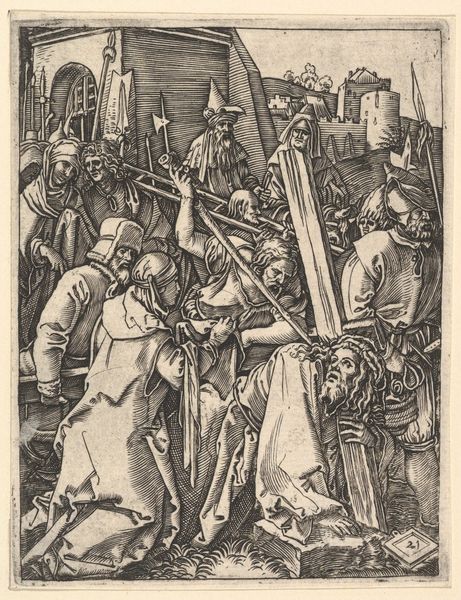
panel, tempera, painting
#
panel
#
allegory
#
tempera
#
painting
#
mannerism
#
figuration
#
history-painting
Dimensions: height 25.4 cm, width 21.2 cm
Copyright: Rijks Museum: Open Domain
Curator: Welcome. Here we have a late 16th-century painting titled "Allegory of Christ as Saviour of the World," likely crafted between 1560 and 1570. It's tempera on panel, and the artist, unfortunately, remains anonymous. Editor: The immediate feeling is… intense. There's so much going on. A real dynamism, a sort of grotesque beauty to the figures all packed into a small space. It feels almost claustrophobic, like everyone is vying for the viewer’s attention. Curator: Mannerism does lend itself to that effect, doesn’t it? Think about the context – this work likely served as a didactic tool, commissioned perhaps by a wealthy patron or a religious order during the Counter-Reformation. It’s heavy with symbolism intended to reinforce theological messages during a period of intense religious debate. Editor: Exactly. Look at the ladder, a clear reference to ascension, while monstrous figures try to impede what seems like Christ’s triumph over death, right? But I am interested in the actual execution – look how the painter achieved those near-translucent washes of colour, especially in the garments, over what appears to be very detailed underdrawings. The control is incredible. Curator: That emphasis on craftsmanship is critical, isn’t it? But think of it this way: the grotesque figures and Christ aren't merely demonstrations of skill but reflections of societal anxieties and theological concerns. How can the labour involved serve the purposes of institutional power? And I mean power, this work likely reaffirmed a particular religious worldview to viewers of that time. Editor: The placement matters too. Did this hang in a grand hall? Or was it destined for private devotion? Its intended audience shapes our understanding entirely. The material wealth poured into commissioning it is so intertwined with its symbolic purpose. Curator: True. Understanding how a piece like this was consumed tells us so much about the religious and social hierarchies it helped perpetuate, the artist's social standing. Editor: Yes. From the price of the materials to the implied power of its patron. It makes you consider the networks involved, from those who acquired the pigments to those who interpreted its message for a specific community. All of that physical presence is impossible to ignore. Curator: Well, this offers a stark and really complex perspective on art’s place in a world of power. Editor: Absolutely. A reminder that behind the apparent meaning lies a nexus of material reality and intentional messaging that speaks directly to cultural history.
Comments
No comments
Be the first to comment and join the conversation on the ultimate creative platform.
